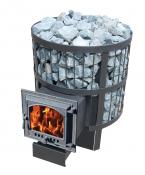Search
Login
How to make brick poles for a fence with your own hands
Increasingly, in modern summer cottages, owners erect impregnable fences. This has become the norm. But not everyone, unfortunately, succeeds in making not just an obstacle for unwanted guests and animals, but building something remarkable that would highlight the site, emphasizing its individuality and aesthetic taste of the owners. Meanwhile, to give the fence originality, not so much imagination and accessible materials are required. And of course, basic building skills. The simplest and most reliable massive fence is obtained from brick, either as a whole, or with forged elements or wooden spans. But in all cases, it is necessary to put brick pillars for the fence, which we will discuss in this article, because it is not so easy to qualitatively put a brick pillar, while eliminating its subsequent inclination and falling and protecting it from destruction by atmospheric precipitation.
Content
- Types of brick pillars
- Calculation of distances between poles and marking of the fence
- Foundation for brick fence posts
- Masonry brick pillars for the fence video
- Decoration of fence posts
Types of brick pillars

A brick pillar for a fence just looks simple from the outside. In fact, it consists of several elements, and its construction is a relatively complex engineering procedure. Here, everything, as in the construction of a house, mandatory marking, foundation construction, waterproofing, the use of high-quality materials, decoration, that is, the whole range of work that must be done, otherwise the posts will tilt and collapse after some time. Brick for the manufacture of fence posts must be selected according to the texture and color, corresponding to the general concept of the main structure on the site. Also take into account the features of the landscape. Pillars vary in design and can be:
- one and a half, that is, a thickness of one and a half bricks
- double, that is, respectively, in two bricks
Of course, in special cases, the pillars for the fence can be of other sizes, but this is rather an exception, yet there must be some reasonable adherence to style and proportions. Depending on the thickness, the poles can carry different functional loads - used for gates and gates
serve as a support for brick spans

hold a wooden crate

or corrugated sheets

and, finally, to serve as jumpers for the forged fence, which looks most impressive, but does not protect the site from animals or prying eyes

Calculation of distances between poles and marking of the fence
Preparatory work before installing the pillars of brick with your own hands begins with the layout of the territory and the drawing of the entire fence, while taking into account both the general dimensions of the site, as well as the elevation and even the nature of the soil. Then a drawing (or sketch) of the fence is compiled, where the pitch of the pillars is clearly indicated.

If this is not done, the load on the poles may turn out to be uneven, which subsequently can lead to a violation of the geometry of the entire fence or its individual elements. The projected distance between the posts, depending on the material from which the fence is made, ranges from 2.5 to 5 meters.
Foundation for brick fence posts
The foundation for the fence posts is carried out according to all the rules of this type of work, with one refinement the foundation is made expanding in depth, that is, its shape should resemble a truncated pentagon with a small degree of slope of the edges, the approximate ratio of the length of the lower and upper edges of the foundation block is 2: 1. This will prevent possible extrusion of the foundation during soil vibrations associated with freezing.

A thick-walled pipe for brick pillars is poured into the middle of the foundation, which gives strength to the entire structure. Subsequently, embedded parts will be welded to the pipe, if necessary (it will definitely be for poles supporting the gate and the gate). The pipe can be taken round, but it is best to weld together two 80x80 channels. It is desirable to completely fill the inner cavity of the pipe with concrete, to give additional stability. The foundation hardens for at least seven days, so there is no need to rush with brickwork. The relatively lightweight construction of the fence allows the use of a single strip foundation for pillars and spans, with this option, special attention should be paid to waterproofing to avoid moisture under the base of the column.
Masonry brick pillars for the fence
The masonry work in the manufacture of fence posts requires uniformity, compliance with the masonry order and mandatory binding to give additional strength. Pieces of reinforcement are used as strapping. All voids between the pipe and the brick are filled with concrete as they are laid and carefully packed.

Instead of mortar, you can also fill the voids with stones and broken bricks, spilling the composition with a lean cement mortar. The process of laying pillars of brick is accompanied by a constant measurement of verticality using a plumb line.
Decoration of fence posts
After masonry work, the fence posts will stand for at least two weeks, so during this time you can do their decoration. If the pillars are made of red brick, they should be treated with special impregnation, which will create a film on the surface that protects against moisture and the appearance of efflorescence (white spots). Depending on the design decisions, the fence posts can also be faced with artificial stone or decorative tiles. To prevent moisture from entering and accumulating in the upper part of the column, and following this process of washing out concrete, a special cap for a brick fence is put on the pole, metal, ceramic or wooden, selected in color and fitting into the overall architectural design of the fence.






